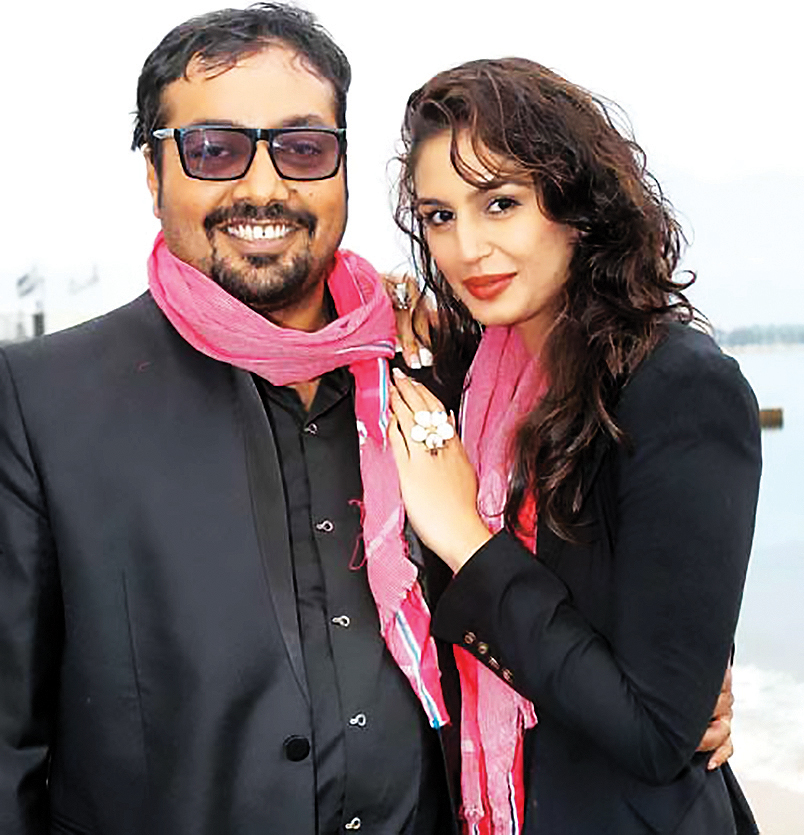The public of the republic has never forgotten its ethnic styles, with politicians and commoners alike wearing Indian couture with elan
In 72 years of India being a republic, our sense of dress has evolved. From indigenous garments that have stayed unchanged for village dwellers to the appropriation of ethnicity by new elites, the country has its own distinctive style that has resisted globalizing influences. We take a look at these perennial vestments that come with memories of the glorious past, powerful manifestations of ‘Indian fashion.’
The gamcha
Known as the most versatile piece of clothing, the gamcha has been a saviour for a huge population living in the vast sub-continent, and is climatically tropical. Worn by rural men in the early years while working in the farms or through their day jobs as a turban, scarf or skirt (if the length allows) in the heat to wipe the sweat and keep them cool, this handwoven accessory has come a long way, to become a fashion statement worn by both men and women.
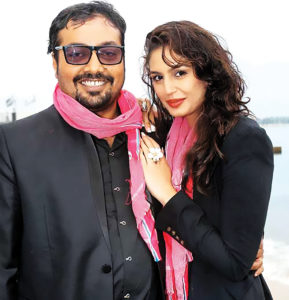
Bollywood has played its part in making this functional item a rage among the masses, so much so that it has been sighted at fashion weeks and sported by Hollywood celebrity Antonio Banderas. In 2012 at the Cannes film festival, the cast of Gangs of Wasseypur went overboard and threw a red gamcha over their blacksophisticated evening wear as they appeared at the dais before the screening of the six-hour movie. Even director Anurag Kashyap wearing a black Dior tuxedo had the native Indian textile wrapped around his neck, all part of promoting the film set in a coalmine belt of rural India.
The Saree
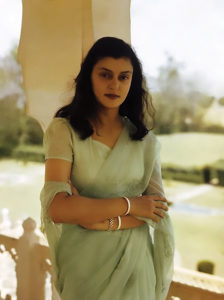 India’s fascination with an un-stitched piece of cloth worn as a garment dates back 5,000 years to the Indus Valley Civilization (3,300–1,300 BCE). The saree is tied in multiple ways in different regions and has evolved through the years, owing to its adaptability and the cultural advancements that took place. Ranging from 3.5 yards to 9 yards in length, a saree can be draped in more than 100 ways recently documented by Border and Fall, an Indian cultural platform. A practical everyday garment for most of the populace and sometimes passed down through generations as heirlooms, it has emerged as a greater symbol of ethnicity and patriotism. Maharani Gayatri Devi and Mother Teresa, actresses like Sridevi and Rekha have worn the coveted outfit in their own ways, giving this length of fabric various identities throughout the history, making it a cultural icon for the women in India. Smriti Irani, the current Textiles Minister is known to sport a handwoven saree to spread awareness about the country’s handloom industry. Often evoking a feeling of nostalgia and memory, a saree is exchanged as a piece of memorabilia for important moments within a family.
India’s fascination with an un-stitched piece of cloth worn as a garment dates back 5,000 years to the Indus Valley Civilization (3,300–1,300 BCE). The saree is tied in multiple ways in different regions and has evolved through the years, owing to its adaptability and the cultural advancements that took place. Ranging from 3.5 yards to 9 yards in length, a saree can be draped in more than 100 ways recently documented by Border and Fall, an Indian cultural platform. A practical everyday garment for most of the populace and sometimes passed down through generations as heirlooms, it has emerged as a greater symbol of ethnicity and patriotism. Maharani Gayatri Devi and Mother Teresa, actresses like Sridevi and Rekha have worn the coveted outfit in their own ways, giving this length of fabric various identities throughout the history, making it a cultural icon for the women in India. Smriti Irani, the current Textiles Minister is known to sport a handwoven saree to spread awareness about the country’s handloom industry. Often evoking a feeling of nostalgia and memory, a saree is exchanged as a piece of memorabilia for important moments within a family.
Nehruvian attire
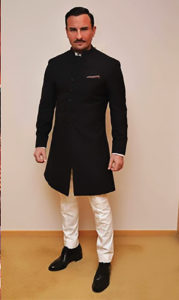 From top to bottom, every bit of Pandit Jawaharlal Nehru’s look gave the millennials a thing of two to adopt for their own personal style. From the Nehruvian cap to his jackets, bandhgalas (jackets) and churidars, each piece represents Nehru’s eloquent speech and sartorial elegance. Actors like Saif Ali Khan, Ranbir Kapoor and Ayushman Khurana are a few actors who have borrowed from Nehru’s classy fashion sense and have taken it to another level. The topi, which is synonymous with the Aam Aadmi Party, is another way, in which his fashion has stayed with us. The Nehru jacke, went on to become popular in Europe and America in the late 1960s and early 1970s as worn particularly by the Beatles and subsequently, the Monkees.
From top to bottom, every bit of Pandit Jawaharlal Nehru’s look gave the millennials a thing of two to adopt for their own personal style. From the Nehruvian cap to his jackets, bandhgalas (jackets) and churidars, each piece represents Nehru’s eloquent speech and sartorial elegance. Actors like Saif Ali Khan, Ranbir Kapoor and Ayushman Khurana are a few actors who have borrowed from Nehru’s classy fashion sense and have taken it to another level. The topi, which is synonymous with the Aam Aadmi Party, is another way, in which his fashion has stayed with us. The Nehru jacke, went on to become popular in Europe and America in the late 1960s and early 1970s as worn particularly by the Beatles and subsequently, the Monkees.
Kolhapuri chappals
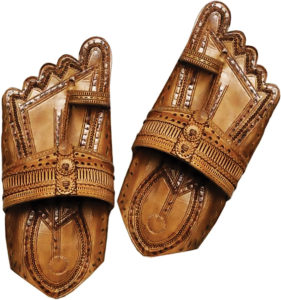 These world famous intricately handcrafted pair of leather chappals, designed back in the 13th century in the town of Kolhapur, Maharashtra, is now an ethnic favourite sold in various local markets of metro cities in India. In Delhi, one can easily spot a shop in Delhi Haat, Sarojini Nagar market, Janpath with designs made for both men and women. A geographical indication from Athwani village, these chappals have used design interventions by craftsmen and designers making a flat heavy weight slipper into an ergonomically made pair of foot wears for a present day wearer.
These world famous intricately handcrafted pair of leather chappals, designed back in the 13th century in the town of Kolhapur, Maharashtra, is now an ethnic favourite sold in various local markets of metro cities in India. In Delhi, one can easily spot a shop in Delhi Haat, Sarojini Nagar market, Janpath with designs made for both men and women. A geographical indication from Athwani village, these chappals have used design interventions by craftsmen and designers making a flat heavy weight slipper into an ergonomically made pair of foot wears for a present day wearer.
The jhola
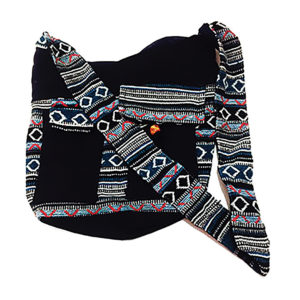 A DIY cotton bag is a memory of every Indian household, made out of leftover fabric from our mother’s printed salwar kameez. A portable sack carried in our handbags, that if needed, can inflate into whatever size one wants, is quintessentially Indian. At times used to carry vegetables and now, milk packed in plastic pouches, the jhola has accompanied us everywhere. Frequently identified with journalists, it has received a makeover of its own as a wide variety of professionals and brands have invested in the pedestrian thing to come up with their versions this domestic essential.
A DIY cotton bag is a memory of every Indian household, made out of leftover fabric from our mother’s printed salwar kameez. A portable sack carried in our handbags, that if needed, can inflate into whatever size one wants, is quintessentially Indian. At times used to carry vegetables and now, milk packed in plastic pouches, the jhola has accompanied us everywhere. Frequently identified with journalists, it has received a makeover of its own as a wide variety of professionals and brands have invested in the pedestrian thing to come up with their versions this domestic essential.

